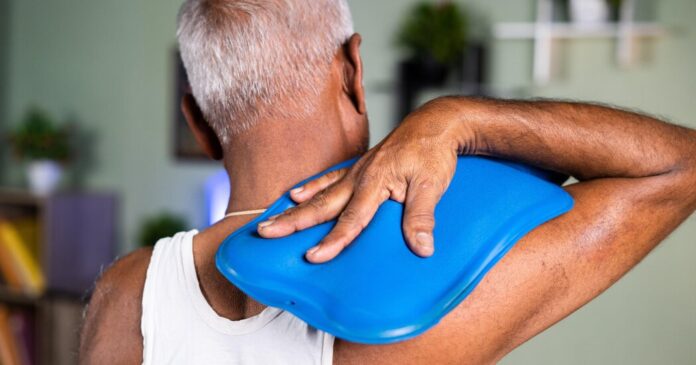The prevailing theory on how to treat sprains and strains, especially from exercise, has been to follow the R.I.C.E. sequence — rest, ice, compression and elevation.
While the method is still widely recommended and observed, some sports medicine physicians, including the one who coined the acronym R.I.C.E., are shifting their guidance: Movement, rather than rest, can better aid recovery in some cases, and icing is not always the most effective treatment.
Dr. Gabe Mirkin, a retired sports medicine physician who in 1978 coined the term, said he no longer advises following that protocol because of evidence that, for some injuries, rest and ice delay healing, rather than aid it.
He now recommends early movement after an injury, as long as patients are not in pain, especially for overuse injuries. “The most important rule is to listen to your body because you feel pain when you’re doing something wrong,” Dr. Mirkin said. “The reason injuries are so common is that people think they can work through pain.”
Updated approaches are incorporated into the (awkwardly named) acronyms “M.E.T.H.” — movement, elevation, traction and heat — or “P.O.L.I.C.E.,” protection, optimal loading, ice, compression, and elevation.
When should you ice, and when should you heat?
While many clinics and health care providers, including Britain’s National Health Service, recommend applying ice to the injury for 20 minutes every two to three hours after an injury, scientific studies on the effectiveness of ice have been inconclusive.
Dr. Julie Han, a sports medicine physician at NYU Langone Health, said there was no right or wrong answer on whether to use heat or ice, and emphasized that neither would cure an injury.
“It’s not going to fix anything, it’s not going to impede your progress if you choose one over the other,” she said. “They’re essentially techniques that could be helpful in alleviating symptoms.”
Typically, to reduce pain caused by acute injuries, she recommended icing for the first week or two when the injury is swollen or bruised and then switch over to heat therapy to relax and warm up the muscle if there is stiffness. But there is no hard-and-fast rule, she said.
“Choose what feels better for you,” Dr. Han said. Nonsteroidal anti-inflammatory medications, like ibuprofen, and physical therapy are the most effective treatments, she added.
Corey Kunzer, a supervisor of physical therapists at the Mayo Clinic in Rochester, Minn., said he typically recommended ice at the initial onset of an injury to help with the pain, and that both ice and heat can be helpful. He tends to recommend heat in the morning, when muscles may be stiffer, and ice in the evening.
Ice is the “safest pain medicine available today,” Dr. Mirkin said. But it also reduces inflammation, which is needed for healing, he added.
Mr. Kunzer said, “You want some of that swelling and inflammation because that is what some of the healing process happens with,” he said. “At the same time, you don’t want too much because it can be painful.”
The argument in favor of movement over rest.
Over his nearly two decades of work in physical therapy, Mr. Kunzer said that recommendations have shifted away from immobilization and toward more early movement. “You want to walk that tightrope, that fine line between getting that motion, but also still protecting it,” he said of the injured muscle.
While moving too quickly after an injury can prolong the pain, too much rest can cause stiffening and further loss of strength. He tells patients that exercise is the best medicine and uses the phrase “motion is lotion” to encourage patients to keep moving, particularly when they have conditions like osteoarthritis.
“Be as active as you can for as long as you can, with whatever activities bring you joy,” he said.
The best treatment approach depends on the injury.
The method of recovery that is most appropriate depends on the type of injury, its severity and its location. While many strains heal on their own within a few weeks, more severe ones may need to be immobilized in a cast or may require surgery.
The bottom line: If an injury is serious, seek recommendations from a doctor as soon as possible for advice on treatment. Understanding the cause of your pain, through a professional diagnosis, can help determine whether it is safe to keep moving or whether rest is required for healing.
Injuries occur when people add too much to their exercise regimen too quickly, so it’s important to build intensity, frequency and duration gradually. As you get older, warming up and cooling down is even more important. Eating a balanced diet and getting enough sleep are good ways to stay healthy and prevent future injuries.



